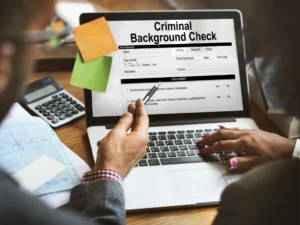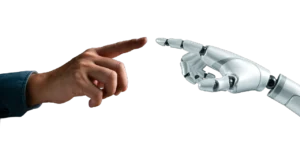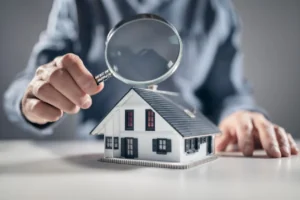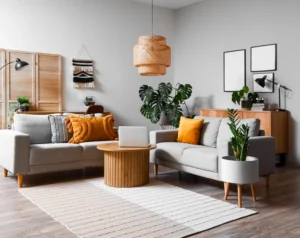Keeping Up With Rental Property Maintenance
 Being a rental property owner can be a highly rewarding experience, but it does come with its own responsibilities. Once you’ve gone through the process of screening for the perfect tenants, such as your tenant background check, there will be routine and unexpected maintenance and repairs that will fall into your lap. It can get expensive and tiresome to wait for problems to arise and solve them proactively.
Being a rental property owner can be a highly rewarding experience, but it does come with its own responsibilities. Once you’ve gone through the process of screening for the perfect tenants, such as your tenant background check, there will be routine and unexpected maintenance and repairs that will fall into your lap. It can get expensive and tiresome to wait for problems to arise and solve them proactively.
Having the right knowledge of your rights as a property owner and keeping up with property management with rental property maintenance is an efficient way that will save you tons of heartache – and your wallet from being emptied – down the road.
Read on to learn more about how you can ensure your rental property maintenance is handled properly.
What is rental property maintenance?
Rental property maintenance is the process of ensuring that a property meets the landlord’s expectations as well as the rights of the tenants renting the property. It includes cleaning, maintaining and repairing the building or unit. It also includes property inspections for safety and compliance with local and federal regulations.
- Cleaning involves vacuuming, dusting and mopping of all common areas. Occasional cleaning maintenance may also require scrubbing and washing walls, floors, ceilings, window sills and door frames. Typically, it’s up to the landlord of a property to thoroughly clean it between tenants moving in and out.
- Maintaining a property involves looking for leaks in pipes or appliances, inspecting for structural integrity, checking for pest infestations and keeping up with routine maintenance (e.g., changing air filters or replacing light bulbs).
- Repairing is done when the landlord fixes problems that have arisen. Often these are out of the preventative control of the landlord, therefore, they require enough available cash flow to fix these problems early before they escalate into even more expensive damage.
Your tenants will have their own obligations when it comes to maintaining the property when it’s in their possession. There are both federal and state laws that encompass landlord and tenant laws. A tenant should be aware of their responsibilities and how they can help the landlord maintain their property.
Most states require tenants to:
- Keep their unit safe and clean to the extent of their ability.
- Keep the property free of garbage and waste by disposing of it safely.
- Make minor repairs for the damage they’ve created themselves beyond what’s covered with their security deposit.
- Not to purposely use plumbing, fixtures and appliances in a manner that would create the need for a preventable and expensive repair, such as flushing tampons, wipes and other non-flushable products down the toilet.
- Notify the landlord of any repairs or maintenance required outside of their routine inspection.
- Follow HOA rules where applicable.
Types of property maintenance – What you should know
One way you can stay on top of rental property maintenance is by keeping a seasonal rental property maintenance checklist. By breaking down your responsibilities at each stage of the year, you will remove the stress that ensues from having to complete everything at once – or neglect certain obligations because you ran out of time. Being on top of seasonal maintenance and repairs will also help save landlords from unnecessary costs and stress that occurs when a tenant chooses to pursue legal action. Your checklist should include all of your regular preventive maintenance as well as screenings and inspections you plan to conduct each season.
Here are some examples of the types of property maintenance you can include in your rental property maintenance checklist.
Maintain air quality
- Check HVAC systems and filters. The cleaner your air filters are, the better air quality your tenants will enjoy. Plus, the dirtier the air filters are, the harder your building’s air conditioning or heating systems have to work, which can lead to higher energy bills, costly repairs and unnecessary downtime. Check HVAC system air filters quarterly for cleaning or replacement.
- Review your carbon dioxide detectors. A working carbon monoxide detector can spot CO2 in the air and protect your tenants from being harmed by the effects of this poisonous gas. It’s important to check with local and state law to ensure you’re following proper carbon monoxide protocol. Even if your state doesn’t require carbon monoxide detectors in rental properties, you should install them anyway.
Fire safety
- Check the dryer vent to make sure it is working properly to expel air from the property. It should also be routinely cleaned – yes, dryer lint can accumulate in the vent as well, leading to almost 3000 fires each year, according to the USFA.
- Inspect smoke detectors quarterly to ensure they are working properly.
- Routinely clean and inspect chimneys, fireplaces and wood stoves.
Water damage prevention
- Shut off any water to outside spigots before the winter season sets in. This will prevent them from freezing and bursting when temperatures drop too low.
- Drain the water heater to flush sediment out and prevent it from clogging or damaging the unit. This should be done once a year.
- Re-caulk showers and bathtubs if there are any minor cracks or breaks to prevent mold from growing.
- Check sink and bathtub drains and thoroughly unclog them from hair and debris.
- Inspect ceilings and walls for any signs of water damage.
- Keep the gutters clean to prevent bugs and pests as well as from water settling into your property’s foundation.
Rental property maintenance and upkeep
- Look out for lease-violating activities – like property damage your tenants might have caused.
- Be wary of pest control as their presence can raise questions about your attention to cleanliness and will make your tenants unhappy. Inspect your property regularly and take care of pest problems promptly.
- Patch up cracks in the ceiling or drywall and inspect them to make sure there is no structural damage.
- Check appliances to make sure they are working properly and do not require repairs. This should be done twice a year.
- Routinely check the exterior of your rental property to ensure it meets safety standards and isn’t affecting the enjoyment of the property by your tenants. You should clean the outside of the property each year, paint when needed, upkeep landscaping work and repair any balconies or patios, if applicable.
Landlords should always be aware when their rental unit needs maintenance or repairs and when it’s time to make improvements and replace items. Staying up-to-date on necessary maintenance is essential for the continued enjoyment by the tenants, value of the property and cost-effectiveness long term. Often landlords, for example, will fix the same washing machine countless times, having to call a repair person to visit each time. These costs can add up, therefore, you should have a policy set in place for your own reference or for your property managers when it comes time to replace something.
Focusing on preventative maintenance as a landlord.
Waiting until the last second to have maintenance operations done for any reason can be disruptive for your tenants – and may lead to increased tenant turnover or loss of interest in maintaining their own responsibilities.
Preventative maintenance, also known as preventive maintenance, is the act of monitoring and repairing issues within your rental properties before they become catastrophic situations. Taking this proactive approach to regular maintenance work minimizes the need for an emergency repair, which are typically more expensive. Preventive maintenance not only gives tenants peace of mind that they’re living in a safe and well-kept building, but it can also save you from unexpected costs or legal consequences.
A preventative repair will almost always cost less than reactive maintenance because the appliance or structure in question won’t be in as bad of shape if you’re regularly monitoring it. Waiting until you have to repair something increases your overall cost because more work will have to be done. No issue can go unresolved for too long when you conduct regular rental property maintenance procedures.
As property owners, you can usually factor rental property maintenance costs into the price of the rent. To calculate the cost of maintenance on a rental property, you’ll have to factor in the time it takes to clean and service the property, which greatly depends on its size and location (as well as how many units you own).
The 1% rule is that maintenance will cost 1% of the property value each year. This can get tricky, however, as it doesn’t account for unexpected damage and repair. To ensure you have enough funds to proactively, rather than reactively, manage your property, experts say you should set aside 50% of your rental income each month for expenses (this includes property tax and insurance). This should all be considered as part of your rent estimate.
Landlords should inspect their rental properties at least once a year. They can do this by hiring an inspector to check the property for potential damage and repairs. You should also inspect before or soon after a tenant moves out to assess any damages they may be liable to fix. Being proactive about your rental properties may take some more work and oversight initially, but it’s worth the effort. Of course, AAOA can help.
Preventative maintenance offers peace of mind to you and your tenants. When you conduct regular maintenance procedures on your rental properties, issues don’t spend too long unresolved. You can rest assured knowing that your building or rental houses are in good condition. Meanwhile, your tenants can enjoy their living experience on your property; they know they’re not living in a broken-down rental and that the amenities offered will be in working order.
Make your job easier with the help of AAOA
The American Apartment Owners Association is dedicated to making your role as a rental property owner easier. Our goal is to provide you with the necessary tools and equipment to serve your tenants more effectively.
AAOA offers more than 150 essential state-specific landlord forms that you can download and print straight from your account. We offer comprehensive and instant background tenant screening services and more to help you minimize your risk and find reliable tenants.
Join AAOA today.













 Accessibility
Accessibility